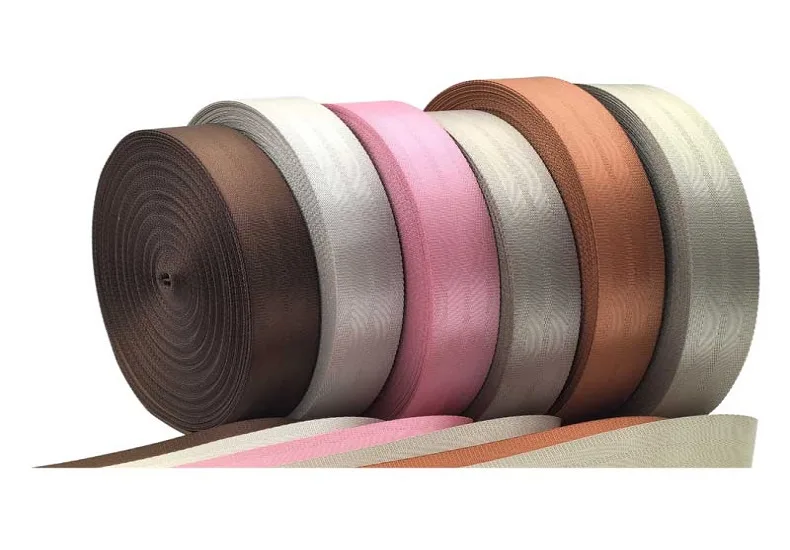
Seat belts are an essential component of vehicle safety systems to lessen the shock of impact. The seat belt webbing, which is the core component of this device, is made of sturdy materials and cutting-edge technology to offer strength and safety.
Seat belt webbing refers to the flexible, woven fabric strap that extends across the passenger’s body in order to restrain them during a collision or sudden stop. Seat belt webbing, which is most frequently made of high-strength polyester fibers, is made to withstand massive forces while remaining flexible and strong for user comfort. It serves the dual purposes of being user-friendly and guaranteeing safety.
Polyester, which has exceptionally good tensile strength, durability, and resistance to wear and tear, is the main material used for seat belt webbing. The closely woven arrangement of polyester fibers keeps the fabric from stretching excessively when under stress. This lack of stretch is critical during a collision, as it ensures the belt restrains the occupant quickly and securely.
Seat belt webbing typically has a width of about 1.8 inches (46 mm) and is designed to distribute the force across the body in the event of an impact. The edges are usually treated to be smooth and rounded to avoid discomfort or injury, such as abrasions or cuts, during normal use or in sudden restraint.
Seat belt webbing must be rigorously tested against international safety requirements to ensure its reliability. The webbing must, for instance, be tested for endurance in a range of environments, including UV radiation, high temperatures, and extended use, and it must be able to sustain at least 3,000 pounds of stress without breaking.
Abrasive resistance is another crucial area of testing. Regular pulling, contact with clothing, and even dirt particles can cause friction on seat belt webbing throughout its lifetime. High-quality webbing should be designed to resist fraying or weakening in such conditions, ensuring effectiveness throughout the vehicle’s lifespan.

The seat belt system works in tandem with other safety components like airbags and crumple zones in the case of an accident or collision. Because of the minimal stretch and sturdy webbing, an occupant cannot move forward too much, reducing the risk of damage from impact with interior components or from protruding from their seat. Additionally, rather than being concentrated in one area of the body, the force is distributed throughout the chest and pelvis.
Additionally, seat belt webbing can be integrated with other advanced systems like load limiters and pretensioners. When a collision is detected, pretensioners immediately tighten the webbing, eliminating slack and securely retaining the occupant. Load limiters lessen the strain on the system by enabling the regulated release of webbing under tremendous stress.
Despite its sturdy design, seat belt webbing needs to be inspected and maintained on a regular basis. Over time, exposure to sunlight, moisture, and contaminants like oil can degrade the fibers. Drivers should periodically check for signs of wear, such as fraying, discoloration, or stiffness, and replace the webbing if needed. Proper care can significantly extend its service life, ensuring consistent performance.
Incorporating strength, durability, and comfort into a compact design, seat belt webbing plays an extremely important role in protecting passengers in the event of a collision. As vehicle safety continues to evolve, so will the materials and technologies behind the belt webbing, providing better protection and comfort.